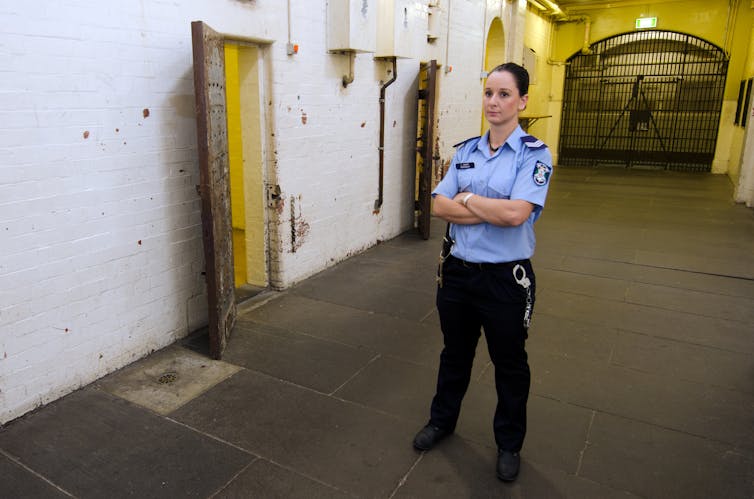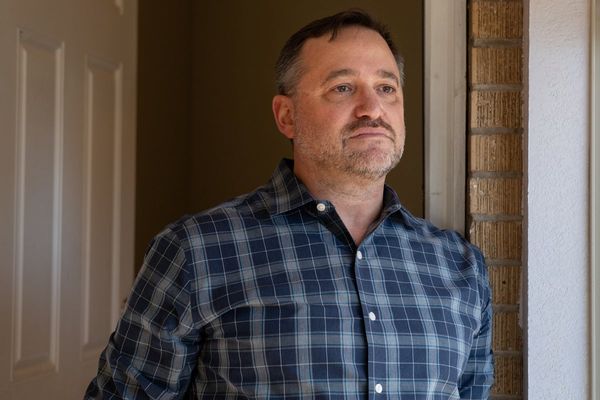For too many women, prison is “as good as it gets”.
New research based on interviews with 80 female prisoners in Western Australia reveals most of these women were “criminalised” by circumstances outside their control before they became offenders.
They were victims of multiple forms of abuse, including family violence. The trajectory of their lives meant jail was almost unavoidable.
In turn, prison became a refuge from all the problems that helped put them there in the first place.
Rising rates
Internationally, women make up between 2% and 9% of the total prison population in most countries. Australia sits at the higher end with just over 8% of inmates being female – 3,426 people as of December 2024.

Across the globe, the numbers and rates of women in prisons are growing faster than those of men.
We see the same trend in Australia, especially in WA. Between December 2022 and 2024, the female imprisonment rate increased by 25%. The state has the highest rate of incarcerated women after the Northern Territory.
It is noteworthy that across the female population in WA jails, 62% of sentences are for non-violent crimes.
Cycles of harm
Given the significant rise in incarceration rates, we conducted our Profile of Women in WA Prisons research. Funded by the WA Department of Justice, our report investigated the pathways to imprisonment.
We had in-depth interviews with 80 Indigenous and non-Indigenous women in eight prisons in metropolitan Perth and regional WA.
The results confirm earlier research which showed women in the criminal justice system are frequently victims of domestic and family violence. However, there is so much more to the story of how women end up in prison. The findings are quite disheartening.
Throughout their stories, “cycles of harm” emerged as the reason they eventually ended up in prison.
Shared stories
Many of the women were exposed to violence, alcohol, drugs, crime and poverty from a very early age. They described negative life events such as trauma, physical and sexual abuse, neglect and domestic violence in childhood.

Leaving home early was a common experience. Due to their young age and vulnerability, they often ended up in unsafe accommodation, with unsuitable partners.
I left home at 15. I told my mum at 11 [about the abuse], she didn’t do anything about it. So I ran away at 14. I had a boyfriend who was much older than me. So he was nearly 20.
Many reflected that their own use of alcohol and drugs was a way of numbing the trauma and pain:
When I ran away, and I was with him for a few years. I remember the first time taking speed, and it just made everything so much easier to deal with. He would come home and beat the crap out of me, and I would just take drugs, and wouldn’t care.
Reaching out for help was not something many of these women were used to doing, due to a lack of self-esteem and struggles with their mental health as a result of ongoing abuse.
Moreover, seeking assistance often backfired, leading to their children being taken away, or the woman being misidentified as the perpetrator.
Little support
Throughout the criminal justice system, there was a lack of support and understanding of what led these women into criminal behaviour.
Once incarcerated, they are in a system that is still dominated by men. They suffer particular disadvantages, such as the lack of women-specific programs and services.
Adding to their difficulties is a lack of safe accommodation and financial support. This makes women subject to even more cycles of harm from which it is hard to escape.
I’ve been coming in and out of prison for the last 20 years. Yeah, I’m 41 now, so in and out of here. Yeah, it’s just due to lack of housing, I’ve been homeless a lot. When I get out of prison, there’s not enough support to set me up to get me back on track in my life. And it’s just, yeah, getting out of prison with no support, no housing, no jobs.
While the burden of imprisonment was undeniable, jail was often viewed as the only safe refuge they had from trauma, abuse and homelessness.
Some felt prison was about as good as it was going to get for them. Many of the women we interviewed were mothers. There is evidence to suggest the offspring of these women face a higher intergenerational risk of incarceration, and new generations may suffer the same cycles of harm.
New approach
The evidence suggests jail is functioning as a solution to social problems like homelessness and drug addiction. This comes at a very high financial cost, with Australia spending over $6 billion a year building and operating prisons.
Yet, we know locking people up is not necessarily creating safer communities.
As many women have become criminalised by the various forms of interpersonal and systemic abuse they have suffered, the rising rates of female incarceration should not be approached as a criminal problem, but as an expression of a failing society letting down its most vulnerable members.
To curb the trend, we need to identify the cycle of harm at the early stages, and interrupt the predictability of ongoing damage which leads to crime and incarceration.
Women have specific needs. We need to address the complexity of the lives they return to after prison to prevent further offending.
Hilde Tubex receives funding from The Western Australian Office of Crime Statistics and Research (WACSAR) Criminal Justice Research Grant.
Natalie Gately receives funding from The Western Australian Office of Crime Statistics and Research (WACSAR) Criminal Justice Research Grant.
This article was originally published on The Conversation. Read the original article.







